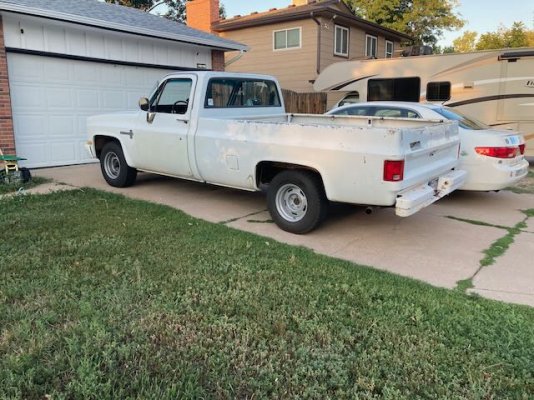mattsk8
Full Access Member
- Joined
- Jun 5, 2024
- Posts
- 209
- Reaction score
- 596
- Location
- Michigan
- First Name
- Matt
- Truck Year
- 1986
- Truck Model
- K20
- Engine Size
- 350
What you mentioned about the dyno numbers is worthy of it's own thread. I'm curious how much HP is actually lost in the drivetrain on a 3/4 ton 4x4 with lockers and 33"+ tires. I know they say roughly 15-20% if you have a RWD with normal tires. But I was pretty surprised when I saw a YouTube video that showed (IIRC) a Nissan Frontier that dyno'd at like 220 hp on stock tires, and lost something like 50 hp on the dyno just swapping to bigger tires. I don't think saying a 30% drivetrain loss is very far from reality on a 4wd with a big rear diff, a locker and big tires.Differential size absolutely plays into mileage.
With everything equal or the same, besides ring gear diameter, the larger unit will get worse mileage. Larger parts, more mass, more friction/contact area.
Which is great for strength, but not economy.
My friends k5, dyno’d with 10 bolt (4.56 gears) and then with the 14 bolt semi float we built (3.73 gears) dropped about 20hp at the wheels. Of course the ratio change plays into that too.
If you put a 10/12 bolt and a 14sf next to each other, the 14sf is significantly larger/beefier in all regards.
For anyone interested, I actually have numbers from 2 different dyno runs on a Charger I had done that shows a Mustang dyno vs a Dyno Jet. The Mustang dyno read 18% lower than the Dyno Jet. That isn't a dig on a Mustang dyno, it just is what it is, a lot of guys actually like the Mustang dyno more. If anyone asks which is better I always say, "if you're just looking for dyno numbers to impress people, take it to someone with a Dyno Jet. Otherwise they both work great for getting reliable graphs for tuning."






